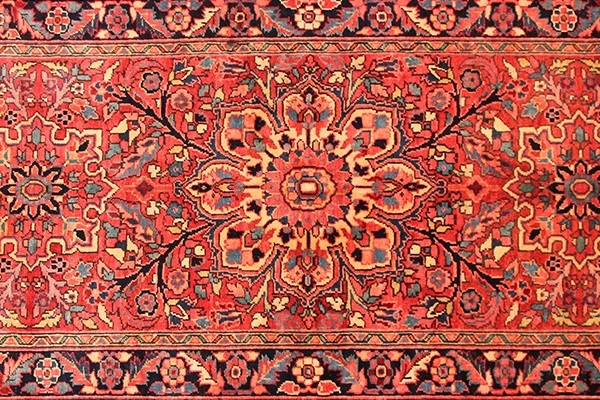Rugs & Carpets | A Brief History
For millennia rugs and carpets have been used throughout the world to make any type of abode, no matter how grand or humble, a home. They were originally conceptualised in order to provide warmth, comfort and for decorative purposes.

For millennia rugs and carpets have been used throughout the world to make any type of abode, no matter how grand or humble, a home. They were originally conceptualised in order to provide warmth, comfort and for decorative purposes.
It is not know exactly when people started making rugs, however there is evidence that ancient nomadic tribes facing extreme cold began to weave reeds and grasses together as a means of separating themselves from the frigid floor. The practice of rug making as we know today, namely the interweaving of wool and other animal fibres together to create floor and wall coverings, began in Central Asia over 5,000 years ago, with the oldest existing example, the Pazyryk Carpet, found in astoundingly good condition in Siberia in 1949, dating to around 500 BC.
It was the Persians who perfected the manufacture of these pieces, elevating them from purely functional domestic furnishings to emblems of prestige and power, through the use of precious metals and gems in finely woven carpets. Persian examples remain the most popular at auction today, with their rich colours and highly decorative scrolling floral and foliate motifs. Whereas Persian rugs and carpets are largely identifiable for this reason, Turkish and Caucasian types can be distinguished for their more geometric style, although all rugs from these areas can vary hugely in material, decoration and method of manufacture depending on the city, town or village in which they were made, and are often so named. These rugs and carpets became popular in the West through the merchants of Venice from the 16th century onwards, and have adorned European homes ever since.
Other notable and popular types are those of the Aubusson region of France, with their often ornate floral detail, and those of the European Modernist and the British Arts and Crafts movements. Sworders have enjoyed success selling the stylish carpets and rugs woven at the Merton Abbey Mills for Morris & Co and in Donegal, Ireland. The most striking and desirable are those by influential designers such as Archibald Knox, Charles Voysey, or William Morris.
Despite the softening of demand for what some consider to be ‘old fashioned’ English country house furnishings, antique carpets remain a staple of interior decoration – particularly with the popularity for waxed and polished hardwood or stone flooring. They have the ability to change any interior into an extraordinary space and the huge variety of decorative styles and colourways means that one is sure to be able to find that perfect piece for their home, no matter the interior scheme.
Some key things to consider when buying rugs and carpets at auction:
- Size – choose a piece which is suitable size for the space.
- Condition – be sure to look for tears, stains or areas of wear and reduced pile.
- Quality – with the popularity particularly of Persian and Eastern rugs in Europe, a great many have been mass produced recently to suit the demand. A look at the back of a piece can be extremely helpful in distinguishing an antique hand knotted example from something which has been made recently using a machine.
Sworders regularly offer rugs and carpets to suit any style or budget in our Fine Interiors, Homes & Interiors and our 20th Century & Modern Design sales. Our specialists are always on hand and more than happy to offer advice about buying and selling at auction.
Recent News
Unmasking a Rococo Master
To be sold in our December Fine Interiors sale, this pair of mid-18th-century giltwood pier mirrors features the masks, scrolls and rococo ornament closely linked to Matthias Lock’s influential published designs.
18 November 2025
Strength and Serenity
Two rediscovered sculptures from Barrington Hall, Hatfield Broad Oak, will be offered for sale on the open market for the first time in nearly 300 years, in our December Fine Interiors sale.
13 November 2025
Versace, Versace, Versace | From Gianni to Donatella
Sworders are delighted to present a collection of Gianni Versace dresses in our upcoming Jewellery, Gifts and Luxury Goods sale, taking place on Wednesday 26 November.
11 November 2025
